By Angie Langevin
Land is an emotional and provocative subject. Books have been written about it, whole genres of literature and art are created around it, national parks sanctify it, and some of our most cherished memories are made on it. Being in the business of protecting over 17,000 acres of land in the Tennessee River Gorge, we deeply know and feel the gravity of land every day. Land is tied to our sense of place as human beings.
A TRGT Property Boundary Sign
Since land itself is bound up with our sense of place, the concept of land ownership is at its essence, an equally layered and complex subject. For example, the history of land ownership in the Tennessee River Gorge is a tangled tapestry of people, their stories, and their hardships. Most of the land in the Tennessee River Gorge was inhabited, pre-colonization, by the Eastern Cherokee people (ᏣᎳᎫᏪᏘᏱ- Tsalaguwetiyi). We acknowledge that these people were stewards of the land, water, and living organisms long before TRGT came along. We also can’t forget that timber and coal were harvested here, moonshine was manufactured, and families have long farmed the rugged terrain. We are currently doing our best as an organization to protect the land as a resource for all people. One of the first steps in honoring this commitment to preserve land as a community resource is to define and mark our property boundaries. This seemingly simple task is as complicated and unique as our individual human relationships with land itself.
Property is often laid out conceptually by a surveyor, who draws a map by walking the land with technology that allows them to measure distance, angles, and elevation. Their map is essentially a best professional estimate of where a piece of land ends and begins on the surface of the earth. Because the earth is not flat, and because surveyors must climb mountains, clamber through rocky ravines, and take their measurements under dense canopies of trees – a map is never perfect.
Now, imagine that the map mentioned above is 40 years old and faded. The instruments used to take the survey measurements also have an equal vintage. You don’t have a digital version of this map on your phone (no Google Maps to help you navigate here!), and the only description for the starting point of the survey is a 75 year old surveyors note that says, “a 32 inch oak tree near a boulder”. Lastly, imagine that it is freezing cold, you are on the side of a steep river gorge, and you are surrounded by a thick underbrush of mountain laurel and rhododendron.
The experience I just described paints a pretty accurate picture of what it is actually like to mark property boundaries (the first step in the how of protecting land). Marking and locating property boundaries requires a whole host of skills and excellent physical shape. At TRGT, we spend months carrying heavy backpacks full of metal property boundary signs, hammers, maps, and red spray paint through the gorge. We do this (while smiling so that red flecks of boundary paint glitter on our teeth and dust our clothing) because we know how profoundly important it is to our promise of protecting the land.
TRGT’s Juan Sandoval marking boundary lines
Without a clear boundary delineating the land that we have promised our community to steward, it is impossible to tell where our property ends and begins. Without a clear boundary, the land lies vulnerable to mistakes – accidental harvesting of trees on an adjacent timber cut, vandalism, trash dumping, development of homes, roads, or trespass into an area that contains sensitive cultural or natural resources. TRGT uses research-based stewardship to decide which areas are appropriate to open to human recreational access and which areas need to be completely preserved by our boundaries.
When you see our signs out in the gorge, we hope you will now think of them in a new way. Hard work, skill, and endless lost fingernails have gone into putting them where they are. Not only that, but marking our boundaries shows that we understand the privilege and responsibility of protecting the acres behind those signs. It also shows that we are honored that you all have put your trust in us to preserve something as profound and important as the land; land that not only provides clean air, water, and habitat, but also a place for all of us.





